1. Why does this topic have to be on the agenda of every company? Or to put it another way: Why is it worthwhile?
We have to face up to climate change. It is one of the biggest threats to humanity, but less than ten years remain to mitigate the worst impacts. Business as usual cannot be sustained. On the contrary, each individual bears responsibility – including businesses.
The European Commission published a new draft directive in 2021 to create a uniform framework for sustainability reporting – the Corporate Sustainability Reporting Directive (CSRD). The draft already reveals that companies will have to disclose information on their climate impact in the future. In terms of content, this also includes disclosures on resource use and Circular Economy.
Regardless of whether companies are directly or indirectly affected by the reporting obligation – transparency requirements are increasing. Companies are thus faced with the challenge of assessing their business model and their own corporate processes for circularity.
2. What are the biggest challenges?
Many companies are only at the beginning of this process. Reviewing all material and energy streams in your company and making them transparent is a time- and resource-intensive process.
Nevertheless, with the help of this data, companies can develop a strategy for achieving holistic circularity. However, the focus of the Circular Economy today is often on how to reduce energy consumption and carbon emissions. But that’s not all – waste generation, water, and raw material consumption, as well as product design and ownership also play a critical role. In view of the current energy crisis, companies should also consider the possibilities of decentralized power generation (via photovoltaic, wind) to contribute to the energy transition.
We do not yet think and operate sufficiently in cycles.
3. How would you convince people who are still critical about this topic?
The circular economy decouples economic activity from the consumption of finite resources, thus securing the long-term existence of our planet, civil society, and businesses.
4. A thought-leader, book or podcast you would recommend?
As a thought leader: Ernst Ulrich von Weizsäcker. He was co-president of the Club of Rome and published the books Faktor Vier and Faktor Fünf.
Furthermore, I would like to recommend the Circularity Gap Reports. The recent publication has revealed that we only cycle around nine percent of what we use – which leaves a massive circularity gap of over 90 percent.
“It takes collective effort, but in the face of the global consequences of climate change, we must act now.”
5. What are the key requirements for the Circular Economy to succeed and eventually become standard?
All change starts from the mind. In the context of the Corona pandemic and the current energy crisis, we have proven that change is possible. It takes collective effort, but in the face of the global consequences of climate change, we must act now.
Launching innovative ideas, however, is not enough to achieve a systemic approach to the Circular Economy. We need a shift in societal thinking as well.
Now, how do we do that? Through educational programs in schools, environmental management systems in companies and open public discourse. Sustainability and circular thinking must be translated into complex systems. At the same time, policymakers can tighten the regulatory framework – for example, by taxing single-use plastic or carbon dioxide. In general following the principle, punish the bad and promote the good. Finally, companies can support green start-ups through partnerships and by rewarding innovative spirit.
